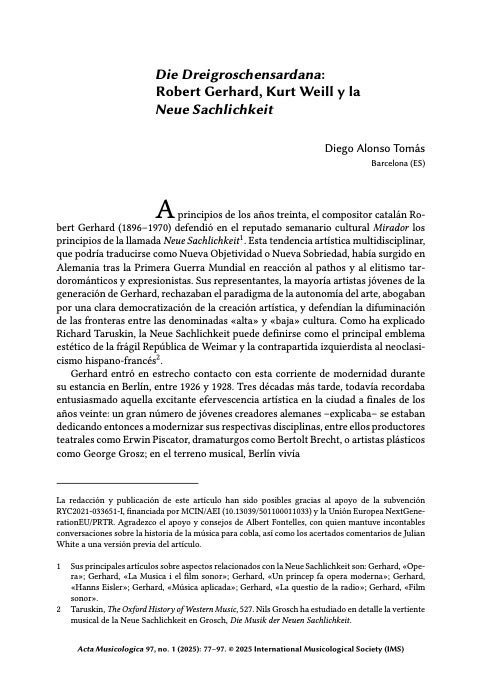Abstract
This article explores the influence on Robert Gerhard’s music of the artistic principles of the Neue Sachlichkeit, a modernist trend in which Gerhard participated closely during his stay in Berlin between 1926 and 1928. My discussion demonstrates that the concert sardana he composed in 1929 for an ensemble including instruments from the Catalan cobla as well as from the jazz bands of the time formed his main response to this trend. The article’s first part establishes that the version of the sardana performed and recorded in recent decades differs from the original piece, premiered in 1929. In the next section, it argues that the sardana merits a prominent place in the history of the Neue Sachlichkeit for its drawing upon the model of the jazz band instrumentation of several compositions by Kurt Weill (exemplified also by some of Hanns Eisler’s works), especially the Kleine Dreigroschenmusik for wind orchestra (1929), an arrangement of the most popular numbers of his Die Dreigroschenoper (1928). The article concludes by examining the reception of the sardana’s premiere in relation to the contemporary significances of jazz, considered by some a necessary component of aesthetic renewal and by others an unacceptable manifestation of racial alterity.
